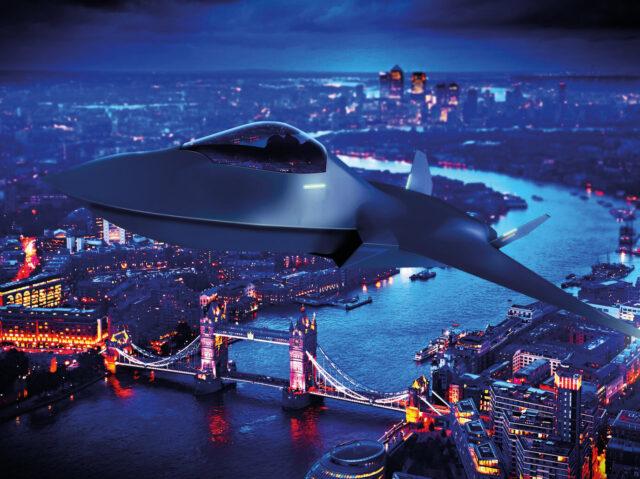TOKYO (AP) – The defense ministers of Japan, Britain and Italy signed an agreement on Thursday to establish a joint organization to develop a new advanced jet fighter, as the countries push to strengthen their cooperation in the face of growing threats from China, Russia and North Korea.
The three countries had agreed last year to merge earlier individual plans – for Japan´s Mitsubishi F-X to succeed the retiring F-2s developed with the United States and Britain´s Tempest – to produce the new combat aircraft for deployment in 2035.
Japan, which is rapidly building up its military, hopes to have a greater capability to counter China´s rising assertiveness while welcoming Britain’s bigger presence in the Indo-Pacific region.
Defense Minister Minoru Kihara said at a joint news conference with his British and Italian counterparts, Grant Shapps and Guido Crosett, that co-developing a high-performance fighter aircraft is “indispensable to securing air superiority and enabling effective deterrence” at a time that Japan faces an increasingly severe security environment.
Kihara said no individual nation can defend itself today, adding that securing the technology and funding to develop an advanced fighter jet involves large risks. He said the joint trilateral Global Combat Air Program is a “historic program” enabling the countries to work together to create a new fighter jet while reducing risks.
Shapps said the joint project will develop cutting-edge technology as well as “a new era of prosperity” involving thousands of people working on the project. “It will strengthen our collective security,” he said. “The risks and problems from Europe to Indo-Pacific are clear for all to see.”
Under the plan, a joint body called the GCAP International Government Organization will manage the private sector joint venture – which includes Japan´s Mitsubishi Heavy, Britain´s BAE Systems PLC and Italy´s Leonardo – to oversee the aircraft’s development. The organization, which will be staffed by several hundred people from the three countries, is tasked with distributing work in different areas, such as the engine and avionics.
The organization will be headquartered in Britain and headed by a Japanese official, and the joint venture will be led by an Italian representative, Kihara said. The top posts will rotate every few years, Japanese defense officials said.
The project, however, hinges on Japan easing its postwar ban on exporting jointly developed lethal weapons to third countries. It said before Thursday’s signing it was working to do so, but the process has been delayed.
Shapps said he expected Japan would approve the changes as soon as possible.
“We are working within the three of us. It needs updating. Otherwise, who will be able to take the project forward at all?” he said. “We couldn’t live with this program without updating those principles of yours. So, clearly that time is coming now.”
Japan is moving ahead despite delayed approval at home in easing its current policy that bans the export of lethal weapons to a third country. The restriction under Japan´s postwar pacifist Constitution does not allow the country to sell a jointly developed fighter jet and possibly complicates the project, since Britain and Italy hope to be able to sell the new aircraft.
A Japanese government panel has been discussing the easing of military sales and has agreed to relax restrictions on the transfer of licensed technology and equipment. But it recently postponed a decision on easing the policy for the joint fighter jet until early next year.
Japanese defense officials refused to discuss how the situation would affect the joint project.
The project is the first time that Japan will participate in a multinational organization to jointly develop new military equipment.
To counter growing threats from China, North Korea and Russia, Japan has been expanding its defense partnerships with countries in Europe, Southeast Asia and the Indo-Pacific, including Australia and the Philippines.

COMMENTS
Please let us know if you're having issues with commenting.